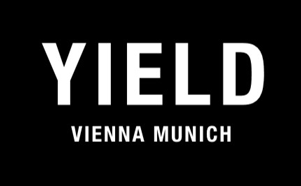
Y PR will never be able to replace advertising (and the other way round)
Why PR will never be able to replace advertising (and the other way round)
Are you not TikTok-ing properly, or why are you blogging all of a sudden? The question was bound to pop up while writing these lines, but was immediately pushed to the side by a robust youth memory from the nineties. Back then, blogging was, so to speak, the premium class of diary writing, an opinion monologue for a largely invisible readership in a casual yet serious tone. The basic idea - I have something to say, so I'll write it down - has lost none of its appeal to this day. Moreover, it has always formed the core of PR work. Whether it's a social media campaign, an interview pitch, an influencer event or the classic press release - it always starts with an idea and a text.
But this only partially answers the basic question of why a communication blog? The format may be perfectly suited to providing insights into our highly exciting, sometimes underestimated and occasionally maligned industry, but why take up the topic at all? Why write about communication and why now? The answer is provided by a look at the media landscape in transition. Facebook, Instagram, Twitter and co. are increasingly being used as news platforms (supposedly free of charge for readers), established print media are fighting declining readership with fun content, aggressive community management and innovative forms of storytelling, tabloids are making forays into quality journalism that is becoming increasingly difficult to finance elsewhere. Even venerable flagships of the state broadcaster are increasingly relying on quota earners who made it big on private television.
Guidance in the content jungle
Against this background, an increased convergence of PR and journalism can be discerned, which not infrequently stimulates discussions. In this context, PR consultants are often confronted with the accusation of confusing information with advertising.[1] Fear of hidden product placements is rife, and PR is often blamed for positioning this content. This perception of our work is far from reality, but the blurring in the perception of public relations is understandable. After all, in the ever-growing tangle of paid and unpaid content that is difficult to keep track of, there are hardly any rigid boundaries.
Such fluid transitions suggest a close relationship between PR and advertising, which corresponds to reality only to a very limited extent. Although both PR and advertising content deal not least with the media presence of products and services, they are otherwise unequal brothers. The biggest and decisive difference lies in the added value for readers. Contemporary PR sees itself as a provider of ideas and information. Hunting for topics in the content jungle is becoming increasingly difficult for journalists. The pressure to deliver stories with high relevance in order to captivate readers and to do so as quickly and in large numbers as possible in order to remain present in a competitive market usually has a negative impact on the quality and duration of research. There is often simply not enough time for an intensive examination of potentially interesting topics. This is where PR acts as an outsourced think tank, diving deep into the subject matter and presenting it to the right medium with the right target group at the right time.
Advertising and PR - well combinable, but not replaceable
While journalists are very good at distinguishing between advertising and public relations, the same cannot always be said at the corporate level. After all, from a sales perspective, the added value for readers is not particularly relevant. Here, the focus is mainly on raising awareness for the product and its impact on sales figures. Since both advertising and PR promise ways to achieve this goal, the two disciplines or their effect are often equated with each other. The view that advertising and PR are interchangeable in this respect is widespread. Why pay for two cooks who end up making the same meal?
Well, the point is - to stay with the culinary - that a meal does not only live from its ingredients (in this case the product or service). The schnitzel in your favourite pub differs from its counterpart in a Michelin-starred restaurant simply because of the ambience that affects the consumer when he or she eats it. In our analogy, advertising is the noble meal - it is expensive, but plays all the pieces, and if the breading does not come out of the pan in the highest perfection, the meal goes straight back to the kitchen. In this example, PR is the more down-to-earth, cheaper, but not infrequently also more satisfying alternative.
What sounds like a judgement here - posh: ew; cosy: great - is merely meant to illustrate the different approaches of PR and advertising. Although both basically address the same target group, they introduce this target group to the topic in contrasting ways.
PR is cheaper and more credible than advertising, but at the same time far less plannable. The abundance of messages that can be packed into advertising, but also its wording and weighting, cannot be guaranteed by PR. What the journalist makes of it is ultimately up to the journalist. The journalist, however, automatically acts as an autonomous reviewing authority. What he reports on has a much higher value for the readership than an advertising text.
Advertising also keeps the media landscape alive
However, the high relevance of paid advertising for the media and thus for society and our democracy itself should not be overlooked here. The past years have clearly shown us how important a functioning media landscape - financed by subsidies, subscriptions, payment models and also advertising - is.
Companies clearly do best when they use PR and advertising in combination and in coordination with each other. The third power in the trio is social media marketing. Relying on all these disciplines promises the greatest success, but is of course also a question of budget. Those who limit themselves to only one of them should be clear about what they can expect for their money - and what they cannot. Part of the daily (scrappy) bread of PR is therefore to find clear words and make realistic forecasts. If no added value can be created from the product or service for the media consumer and thus no incentive for the journalist, the client is better off with advertising. This is another point where PR clearly distinguishes itself - it selects and presupposes a certain quality. I will deal with this topic in more detail in my blog.
To be continued…





